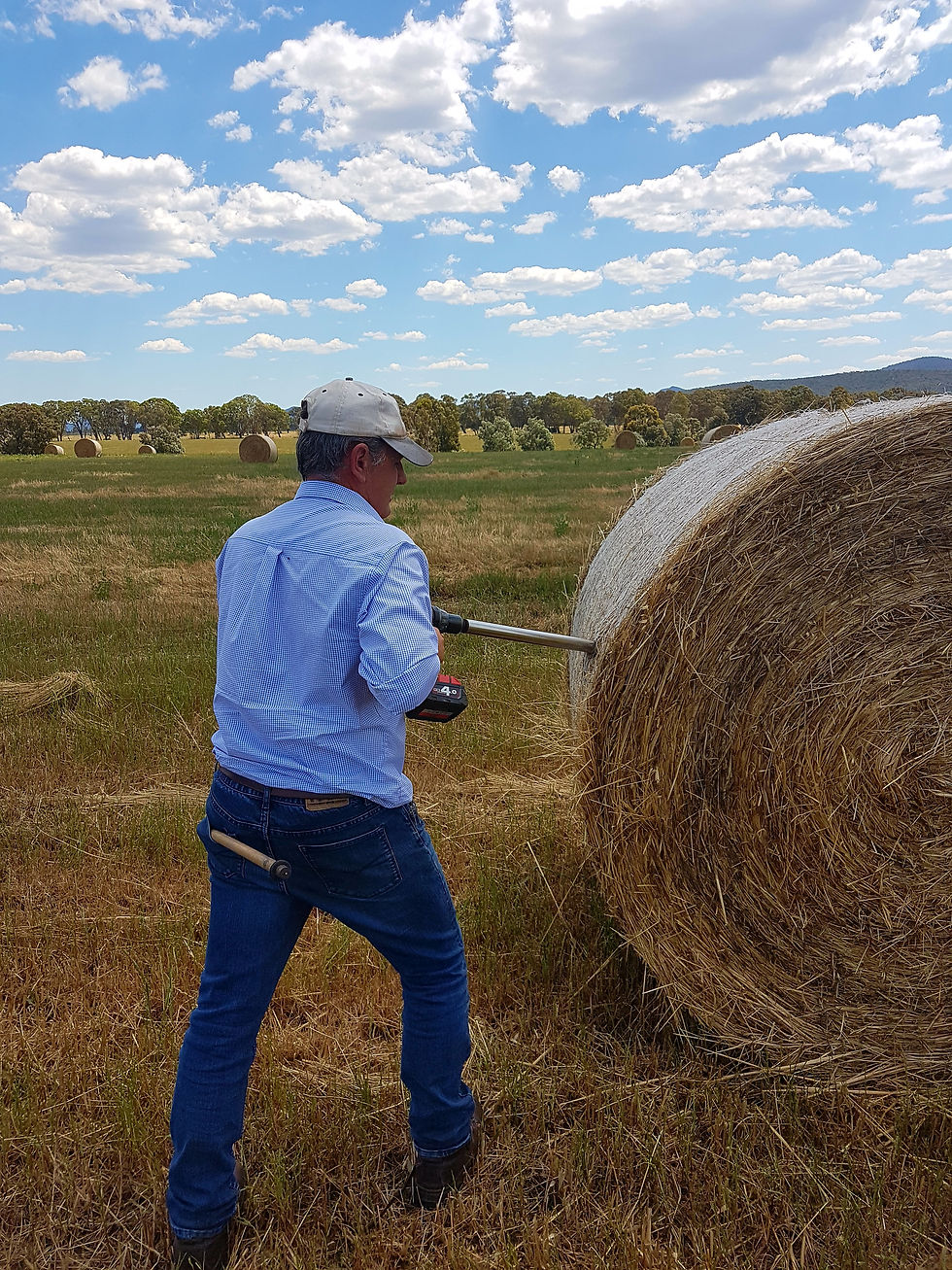ENERGY BALANCE FOR LAMBING & LACTATION
- Mikaela Baker

- Apr 16, 2021
- 2 min read

Chasing milk production in sheep generally isn’t the primary focus unless you run a sheep dairy. However, it definitely needs to be further up the focus list when preparing and managing lambing ewes.
See below a graph on ewe energy requirements we shared last year, once the ewes begin lactating their energy significantly increases. This extra energy is then efficiently converted to milk for lambs when their requirements are met.
A key thing to note in the graph, the grey bar shows energy provided from 48% NDF and 9.8 ME cereal or pasture hay which was typical from the 2019 harvest. Now in 2021, and mostly using 2020 forage as our base, the situation is extremely different.
In 2020, across many regions were less than ideal baling conditions with consistent rains that either kept hay on the ground too long; or cut very late; or both. This resulted in feeds with very low protein, down to 5% CP and very high NDF, up to 60%. These results are very similar to straw, which we know can’t sustain animals and definitely can’t provide enough energy to successfully lamb and continue to produce good quality milk.

Where to start
Quickly grab a forage sample and send it off to Forage Lab Australia (FLA) for an A1 NIR analysis, they have a quick turnaround and comprehensive results. FLA will provide Crude protein, but also critical information on ADF, Lignin, sugars, energy and more.
Match grain to the hay – a good mix may consist of both lupins and a cereal grain, such as wheat or barley which provide energy density and valuable nutrients.
Lupins will provide much-needed protein to get around our target of 14-16% CP
Cereal grains will provide starch, a highly valuable component of milk production for volume and milk protein. Starch is a precursor for glucose, which also provides benefit to the foetus and ewe pre-lambing. Consider wheat or barley.
Begin feeding grain 3 weeks prior to lambing and always introduce slowly – ruminants are habitual animals and benefit from consistency in routine. Trail feeding will allow controlled grain intake, or ad-lib feeders can be useful when labour is not available. If using an ad-lib feeder, it is critical they never run out of grain or animals will become stressed and likely overeat when it is refilled. Always have forage available ad-lib and clean water.
Meeting energy requirements will reduce risks of preg toxaemia; low glucose, and support milk production for lambs to also have better survival rates. For best results, systems must be adapted to feed quality available, using the same recipe as last year may not yield the same results.
So to get the best productivity throughout your lambing, call one of our TRAC Experts to ensure your forage rations are nutritionally balanced for maximised lactation results.
Our Consultants
EXPERTS IN RUMINANT PRODUCTIVITY
Mark Facy
0427 243 320
Owen Rees
0429 437 823
Mikaela Baker
0457 243 319
To download a copy of this article, please click the link below...




Comments